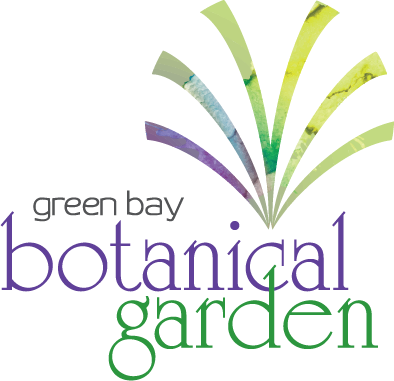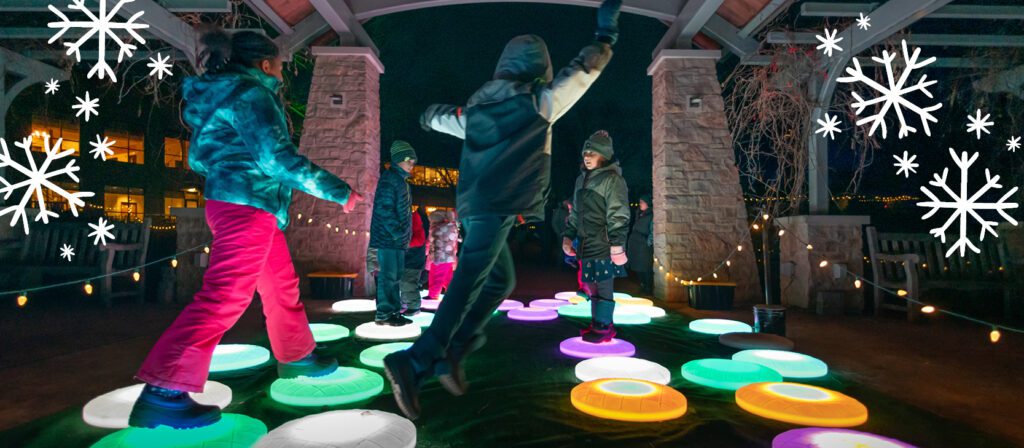Spring has sprung — or we hope it happens soon! — and it’s time to start thinking about what you’ll be planting this year. If you love the idea of growing your own plants but perhaps are reluctant due to a lack of experience or knowledge, you’ve come to the right place. It can be easy to have anxiety for your first time starting plants by seed, but it’s actually not as difficult as you may think. All you need are a few basic ingredients and you will be able to grow some of your favorite plants and veggies all by yourself!
While most vegetable plants are readily available at your local nursery or greenhouse in the early spring months, they typically carry a limited selection of varieties. By purchasing your own seeds, you have control over which varieties you grow. Not only can you extend the season of cool season crops, but you can also get a head start on growing warm season crops. Here’s what you need to start your seeds:
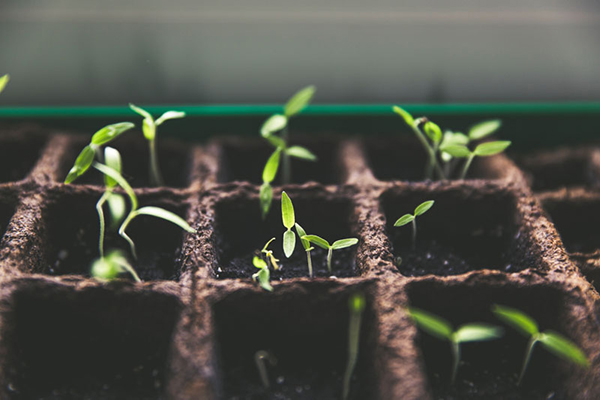
Growing Medium
A growing medium is the material in which plants grow. What is growing medium used for? A growing medium serves three primary functions. It:
- provides physical support for the plant.
- facilitates root growth.
- delivers nutrients, water, and air to the plant through its roots.
While soil is the most traditional growing medium, it’s far from the only option. It’s typically best to amend soil with one or more additional growing media for optimal results in your gardening tasks. Each medium has its own distinct characteristics which may enhance your plant growth. At the Garden, we use a product called Fafard® 3B mixed with a slow-release fertilizer, Osmocote®.
Soil
Soil is the most typical and readily available option. This makes a great base in an outdoor garden or starter for some container gardening projects, though it is susceptible to pests and diseases. Soil is:
- affordable.
- sustainable.
- rich in nutrients.
Compost
The product of organic decomposition, compost is a nutrient-rich growing medium that makes an excellent base for outdoor gardening. It is:
- weed-free when prepared at the right temperatures.
- rich in all major nutrients.
- natural and sustainable.
Peat Moss
Peat moss is the result of long periods of decomposition in peat bogs. Greenhouse gases are released as a result of the mining process for peat moss, so some shy away from the environmental implications of using this medium. Peat moss is:
- sterile.
- excellent at water retention.
- acidic.
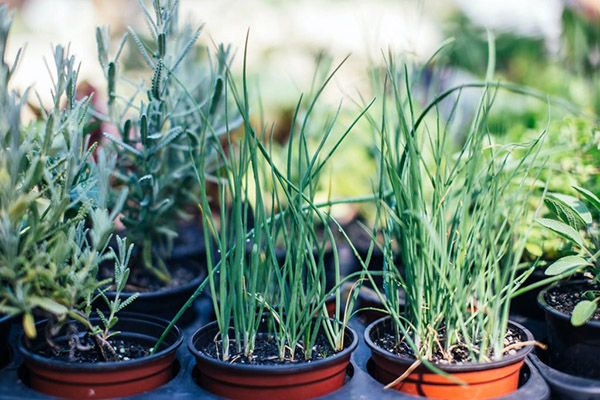
Containment
Besides a growing medium, you’re going to want some sort of a container, such as pre-made growing kits or reusable containers (old flowerpots, sour cream containers, paper cups, egg cartons, etc.). Make sure they are clean (sterilize with a 10% bleach solution) and have drainage holes.
Light
For optimal light, a sunroom or south-facing window is your best bet. Seedlings need 6-8 hours of direct sunlight or 12-15 hours of supplemental lighting (ex: an overhead shop light or LED light). Not enough light leads to tall, leggy plants that won’t do well when you finally plant them outside in your garden or landscape.
Warmth
Starting seeds means you also need some amount of heat to germinate them since seeds require a certain temperature in order to germinate properly. Each plant has a specific optimum and a range in which germination will occur. The closer the temperature is to optimum point the quicker germination will occur. Most seeds germinate when the soil temperature is somewhere between 68 and 86 degrees Fahrenheit. There are actually a few options to help with this process, such as heat mats, a warm windowsill, or the top of your fridge.
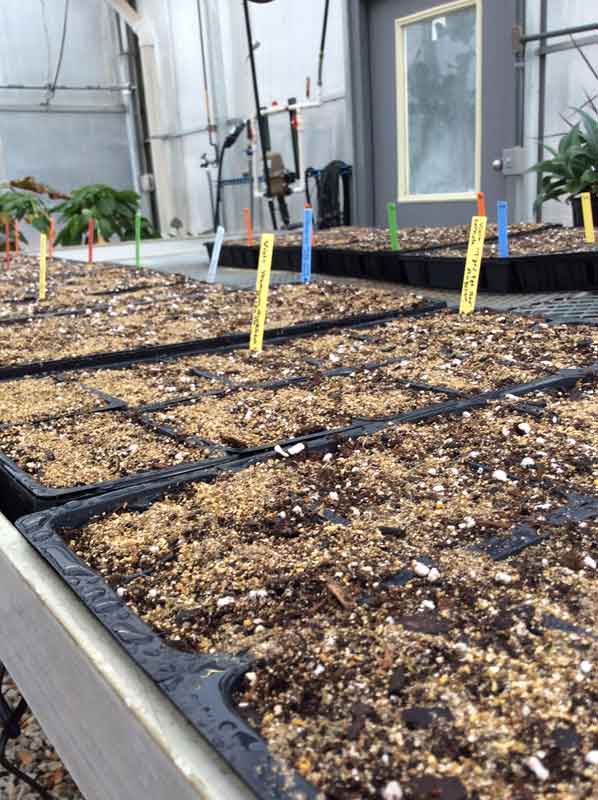
Water
Although this is an obvious component, water helps seedlings sprout and grow.
How Do I Plant My Seeds?
- Fill your container with moistened soilless media.
- Plant seeds according to the directions on the seed packet. Most seeds like to be planted 1-2 times as deep as they are wide. For small seeds, cover with a dusting of fine grade vermiculite. Don’t forget to label which plant is growing in which container with craft sticks or small plastic label stakes.
- Water seeds with a fine mist and keep the soilless media evenly moist until germination occurs. Cover the container with a clear plastic lid or plastic wrap to keep the growing environment humid. Once seedlings have emerged, remove the cover.
- Place planted containers on a warm growing surface. Once seedlings have emerged, remove from heat and move into a cooler room. Make sure the room receives at least 6-8 hours of direct or 12-15 hours of supplemental light per day.
When Should I Start My Seeds?
As a general rule, seeds need to be started four to six weeks before the date of the last frost in your area. Seed starting times are calculated by taking the date of the last frost and subtracting the days until transplant. The seed packet will tell you how many weeks. The best time to start seeds is usually late March to late May. Only the southern zones are suitable for starting plants from seed in the earlier months. Give the plant enough time to germinate and grow to an appropriate transplant size.
It also depends on what you’re hoping to grow. There are so many vegetables, both cool and warm season, and hardiness zones. It can help especially to use a calendar like the one found on the Old Farmer’s Almanac website and search by zip code to find accurate start dates for your region.
Cool Season Vegetables
Based on our USDA Hardiness zone of 5a in the Green Bay area, most cool season veggies such as lettuce, cabbage, kale, or onions can be started indoors in March. Peas, carrots, radish, beets, lettuce, or spinach can be directly sown outdoors in late April to early May while the soil is still cool.
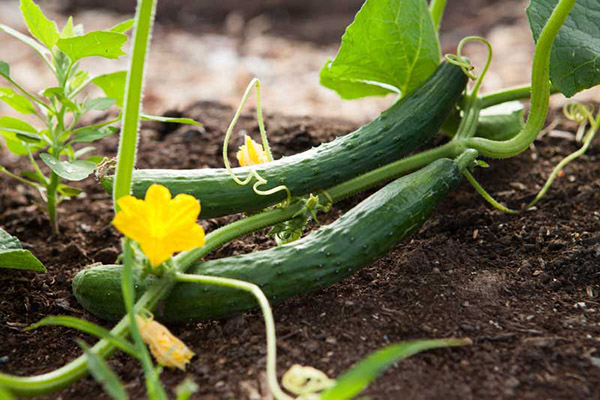
Warm Season Vegetables
Most warm season veggies like peppers, tomatoes, cucumbers, herbs, squash, or pumpkins can be started indoors in April. Corn, zucchini, cucumbers, squash, and pumpkins can be directly sown outdoors in late May to early June, once the soil is warm.
Warm season veggies won’t grow in cool soil and require a longer growing season to set fruit. For example, if we waited until the soil warms in late May to early June to plant tomato seeds outside at the Garden, we may get fruit to set by the end of the season but would likely have a killing frost in autumn before the fruit actually ripens. So, we start our tomato seeds early indoors to give the plants the best chance to set fruit that will ripen and be ready for harvest by the end of the season.
If you’re having trouble with your seeds not germinating properly, makes sure you’re aware of some common mistakes to avoid from the Creative Vegetable Gardener.
For more information on seed starting, check out our how-to video below from 2020.
It’s never too early to start planning your garden for the next year! Make a list of all your favorite recipes, grow all your ingredients right at home, and share with your neighbors or local food pantry.
The number one goal of starting your own plants is to produce healthy and vigorous seedlings that will survive the trials and tribulations of the outdoors once they’re planted in the ground.
Focusing on a few of the most important factors that go into growing great plants will help you improve your seed starting projects by leaps and bounds.
And that means it will be a lot more fun – which is one of the main reasons to start your own seeds!
